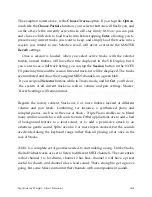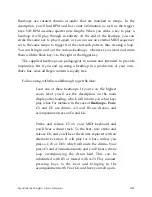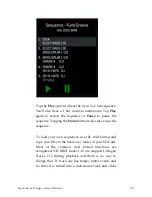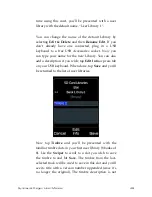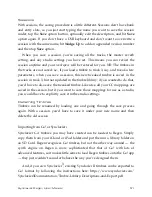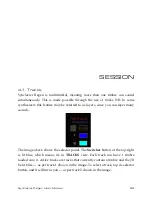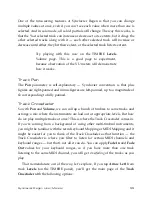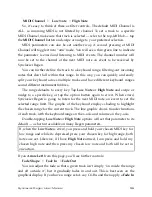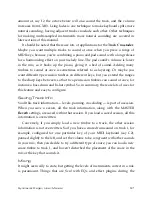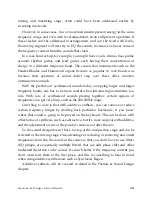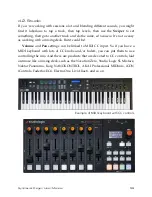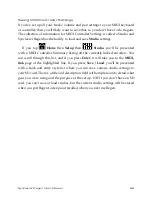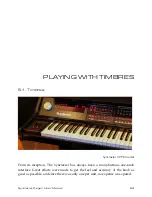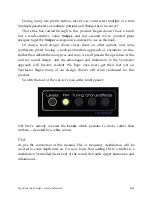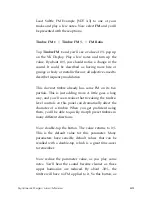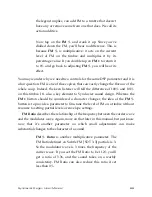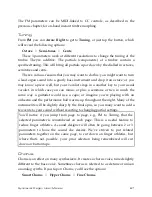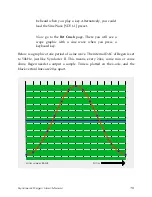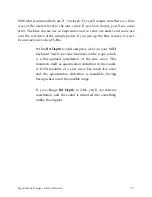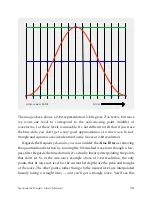
Synclavier Regen User Manual
58
mixing and mastering stage, often could have been addressed earlier by
tweaking mix levels.
However, in some cases, two or more instruments present energy in the same
frequency range, and even with level adjustment, it can still present a problem. If
these clashes can’t be addressed in arrangement, and can’t be fixed with levels,
the mixing engineer will next try to EQ the sounds to remove or lower some of
the frequency content from the sounds that clash.
In a rock band set-up, for example, you might have vocals, drums, bass guitar,
acoustic rhythm guitar, and lead guitar, each having their concentration of
energy in a different frequency band. The reason that instruments such as the
Fender-Rhodes and Hammond organs became so popular in rock bands was
because their spectrum of sound didn’t step over these other common
instruments too much.
With the plethora of synthesized sounds today, occupying larger and larger
frequency bands, one has to be more careful when introducing instruments to a
mix. With lots of synthesized sounds playing together, certain regions of
frequencies can get very busy, such as the 200-300Hz range.
One thing to note is that with additive synthesis, you can remove or reduce
certain frequency ranges by dialling back particular harmonics, if you know
where that sound is going to be played on the keyboard. This can be done with
other forms of synthesis, such as subtractive, but it’s more surgical with additive,
and the adjustment occurs at the point of creation, not after the mix.
So the sound design doesn’t have to stop at the composition stage and can be
revisited at the mixing stage. One advantage of reducing or removing unwanted
frequencies from the the sound at the source is that you don’t have to use filters
(EQ plugins are essentially multiple filters) that can add phase shift and other
undesired distortion to the sound. It’s much better if the frequency content you
don’t want isn’t there in the first place, and this is something to bear in mind
when using additive synthesizers such as Synclavier Regen.
Additive synthesis will be covered in detail in the Partials & Sound Design
chapter.

